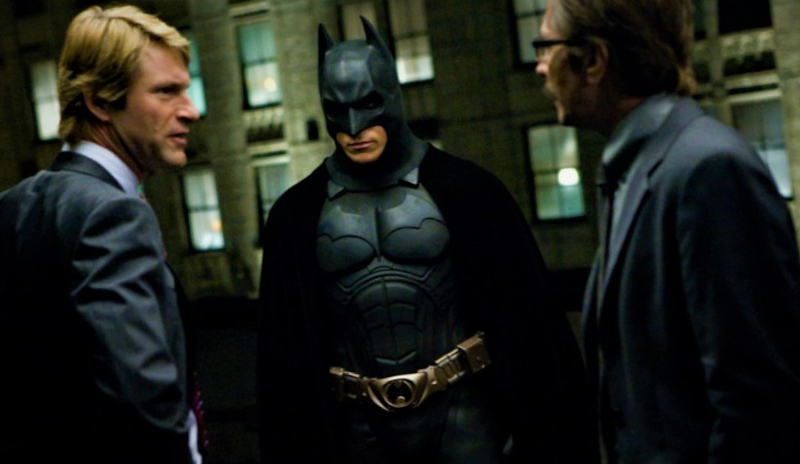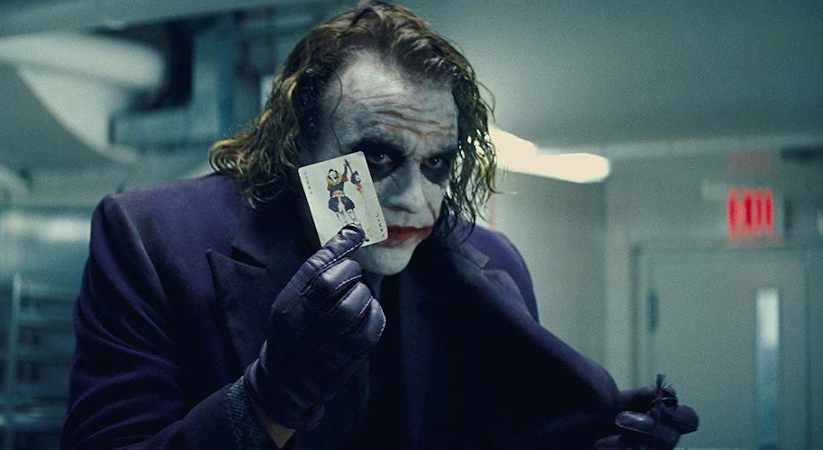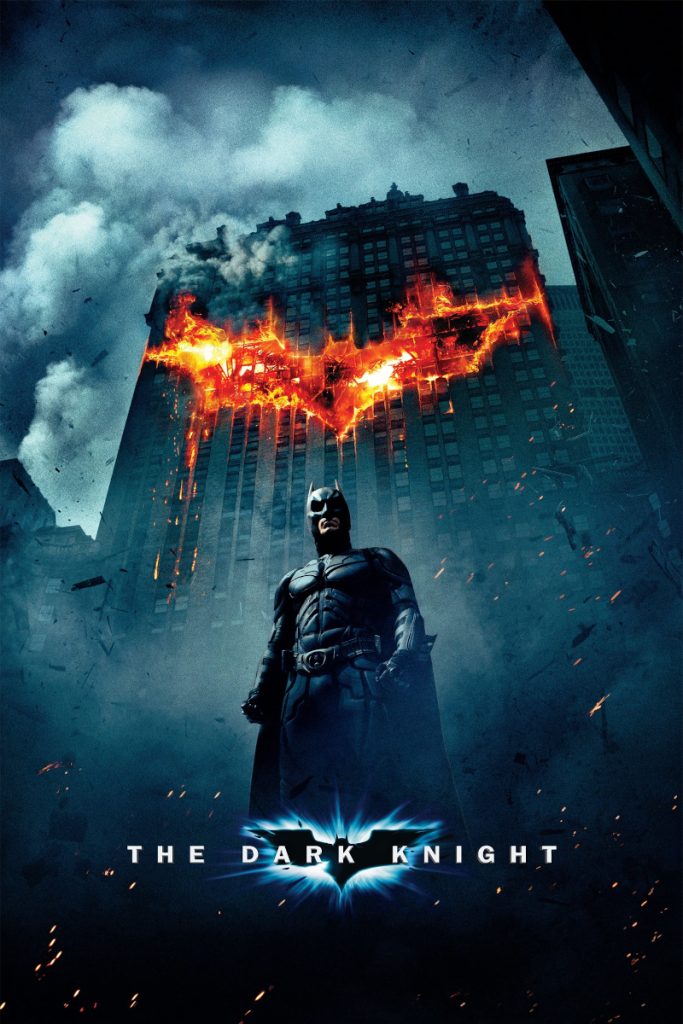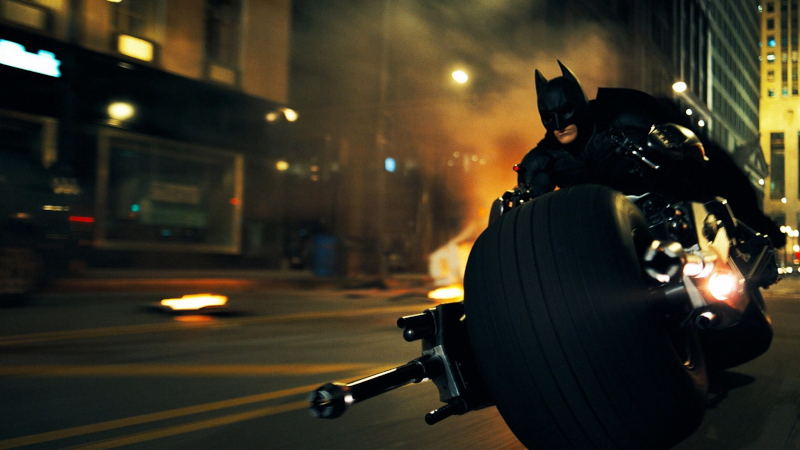Director – Christopher Nolan – 2008 – US – Cert. 12a – 152m
*****
If you see The Dark Knight in an ordinary cinema rather than IMAX 70mm, you haven’t seen it at all – review originally published in Third Way in 2008.
The Caped Crusader is as significant a figure in the media landscape as he is on the Gotham City skyline. Ever since revisionist graphic novel The Dark Knight Returns (1986) suggested that the methods of a so-called hero who went around beating up villains might in fact be less than heroic, the complexity of the character has become increasingly apparent. In print, the high point has been the Red Rain trilogy (1991-98), which reinvented the character as a vampire! Hollywood has jumped on the bandwagon in the last two decades with two quirky Tim Burton movies, two vacuous, family-friendly Joel Schumacher sequels and two darker Christopher Nolan outings (Batman Begins and this one).

Nolan’s entries have focused on Batman / Bruce Wayne (Christian Bale) rather than simply on Batman, whose masked vigilante is less a fabrication than his everyday millionaire playboy alter-ego. Bruce is trapped between wanting to protect the city from criminals and the dubious methods he employs to do so as Batman. The latter prevent his providing a good role model for the city as Lieutenant (later Commissioner) Gordon (Gary Oldman) or District Attorney Harvey Dent (Aaron Eckhart) do. (By comparison, no such moral conflict is explored in playboy and techno-geek Iron Man / Tony Stark.) Indeed, Gotham now has an epidemic of copycat Batmen. Yet, however questionable is Bruce Wayne / Batman’s system of moral values, there’s no denying he has one.

In The Dark Knight, however, Batman is upstaged by nemesis The Joker (an astounding performance by the late Heath Ledger). There are other villains: Scarecrow (Cillian Murphy) puts in a cameo and Dent, who makes decisions on the toss of a coin, later turns into Two-Face. But the tagline ‘Welcome To A World Without Rules’ is talking about the Joker. When one of the bank robbers in the opening hold-up sequence removes his rubber clown mask to reveal The Joker’s painted face beneath, it’s not the crisp, coloured make-up that adorned Jack Nicholson in 1989’s Batman, but rather an actor whose scrunched up face has served as canvas for cracked and smudgy colour overlay to lend his face a whole other shock level. Money is unimportant: he stands behind his split from a lucrative criminal deal and sets fire to the huge stack of banknotes. The Joker is a figure lacking moral compass, an instigator of mayhem unafraid of losing his own life. Ledger plays him not for laughs but rather as an uncontrollable force in demented free fall.

More impressive still is the use of giant-screen format IMAX cameras to shoot several sequences, the first time they’ve been used as such in a fictional narrative feature. In the IMAX 70mm version, the opening letterbox Warners logo gives way almost immediately to larger top and bottom areas as the camera plunges with villains descending at an angle on ropes off one building onto a lower rooftop. The rest of the opening heist is breathtaking in the format, but even better throughout is the integration of the IMAX footage into the whole. Suddenly, while watching a traditional shaped movie frame, the screen expands for an iconic shot of Batman on the edge of a gigantic skyscraper overlooking the metropolis. Indeed, the film’s cityscape aspect is arguably its strongest. Impersonal skyscrapers and featureless underpasses suggest the brutality of high-tech, modern architecture: an unforgiving world whose rules are not to be infringed.

So skilful is the editing together of the regular and IMAX formats and so powerful its emotional impact that, after a while, you lose track of when you’re shifting from one to the other on all but the most subliminal level. Yet it still achieves a feeling of hyperrealism as innovative, in its own way, as the dinosaurs in Jurassic Park. Just as one now divides movie creature special effects into before and after Jurassic Park (Steven Spielberg, 1993), so too in retrospect will one divide movies’ use of the IMAX format into before and after The Dark Knight: The IMAX Experience. If you see this movie in an ordinary cinema, rather than in IMAX 70mm, you haven’t really seen it at all.
Review originally published in Third Way in 2008.
UK release date 24/07/2008.
Trailer:
